Did you know that zucchini is one of the fastest-growing vegetables in home gardens? It’s true! With the right techniques and a little bit of care, you can enjoy a bountiful harvest of this versatile and delicious vegetable in no time. Whether you’re an experienced gardener or a beginner, I’m here to share my green thumb secrets for growing zucchini successfully.
Key Takeaways:
- Zucchini is one of the fastest-growing vegetables in home gardens.
- With proper techniques and care, you can have a bountiful harvest of zucchini.
- These green thumb secrets are suitable for both experienced and beginner gardeners.
How Long Does Zucchini Take to Grow?
Zucchini is a summer squash that thrives in warm weather and cannot tolerate frost. It germinates within one to two weeks and starts blooming within 45 to 50 days after planting. The fruit grows rapidly and is usually ready for harvesting within a few days of appearing. The entire process, from planting to harvesting, takes about 60 days in warm conditions.
When to Plant Zucchini
Zucchini is a summer annual that should be planted in the spring when the weather and soil have warmed up. It is a heat-loving plant and should not be planted until the danger of frost has passed and nighttime temperatures consistently remain above 50 degrees Fahrenheit. In colder climates with shorter growing seasons, starting the seeds indoors or buying young plants can give you a head start.
When it comes to planting zucchini, timing is crucial. Planting too early can expose the young plants to frost, which can stunt their growth or even kill them. It’s best to wait until the soil has warmed up and the risk of frost has passed before planting your zucchini seeds or transplants.
In most regions, this means planting zucchini in the late spring or early summer. You can use local gardening resources, such as the USDA Plant Hardiness Zone map, to determine the average last frost date in your area. Once you have this information, you can calculate the optimal planting time for your zucchini crop.
In colder climates with shorter growing seasons, starting the seeds indoors can give your zucchini plants a head start. You can sow the seeds in small pots or containers filled with seed starting mix about four to six weeks before the last expected frost date. Place the pots in a warm location, such as a sunny windowsill or a heated greenhouse, to encourage germination and growth. Once the danger of frost has passed and the soil has warmed, you can transplant the young zucchini plants into your garden.
Planting zucchini at the right time ensures that the plants can take full advantage of the warm weather, long days, and optimal growing conditions. By following the recommended planting schedule, you can increase the chances of a successful zucchini harvest and enjoy a plentiful supply of this delicious summer vegetable.
How to Plant Zucchini Seeds
Planting zucchini seeds is a simple and rewarding process that can be done directly in the ground or started indoors. Here are two methods for planting zucchini seeds:
- Directly in the Ground: This is a popular option for many gardeners. Follow these steps to plant zucchini seeds directly in the ground:
| Step | Action |
|---|---|
| 1 | Choose a sunny location in your garden with well-drained soil. |
| 2 | Prepare the soil by loosening it and removing any weeds or debris. |
| 3 | Sow the zucchini seeds about one inch deep and three feet apart. |
| 4 | If planting in hills, place three to four seeds per mound. |
| 5 | Thinning the seedlings to one plant per hole or mound ensures that they have enough room to grow. |
| 6 | Water the seeds immediately after planting and keep the soil consistently moist. |
| 7 | Provide support, such as trellises or cages, if growing vining varieties. |
| 8 | Monitor the seedlings for any pests or diseases and take appropriate measures. |
- Starting Indoors: Starting zucchini seeds indoors can give you a head start on the growing season. Here’s how to do it:
“Starting zucchini seeds indoors allows for better control over the growing conditions and can help protect the young plants from unfavorable weather. It also gives the seeds a chance to germinate and develop before transplanting them into the garden. To start zucchini seeds indoors:
- Fill seed trays or pots with seed-starting mix.
- Plant the zucchini seeds about half an inch deep and one to two seeds per cell or pot.
- Place the trays or pots in a warm location, such as near a south-facing window or under grow lights.
- Keep the soil consistently moist but avoid overwatering, as it can lead to damping-off disease.
- Once the seedlings have grown two sets of true leaves, they are ready to be transplanted into the garden.”
“By starting zucchini seeds indoors, you can extend the growing season, enjoy an earlier harvest, and improve the overall success of your zucchini plants.”
Quick Tips:
- Before planting zucchini seeds, check the seed packet for any specific instructions or recommendations.
- Choose high-quality seeds from reliable sources to ensure better germination and healthy plants.
- Consider rotating the location of your zucchini plants each year to prevent the buildup of pests and diseases in the soil.
With these planting techniques, you’ll be on your way to growing delicious zucchinis in your own backyard garden!
How Far Apart to Plant Zucchini
Proper spacing is crucial when planting zucchini to ensure healthy growth and maximize yields. As a first-time grower, I recommend starting with one or two zucchini plants. Zucchini plants are prolific and can produce an abundance of fruit, so overcrowding can lead to competition for nutrients and increased susceptibility to diseases.
When it comes to spacing zucchini plants, rows should be at least two to three feet apart. This allows adequate airflow between the plants, reducing the risk of fungal diseases, such as powdery mildew, which can thrive in wet and humid conditions.
If you have limited space, consider growing smaller varieties or implementing vertical growing techniques. Compact zucchini varieties are perfect for container gardens or small plots, as they take up less space and still yield a satisfying harvest.
Vertical growing techniques, such as using trellises or stakes, can maximize space utilization and provide support for zucchini vines. By training the vines upward, you can save valuable ground space and create a visually appealing vertical garden.
Here’s a simple spacing guide to follow when planting zucchini:
| Zucchini Type | Spacing |
|---|---|
| Traditional Green Zucchini | 3-4 feet apart |
| Pattypan Squash | 2-3 feet apart |
| Yellow Squash | 2-3 feet apart |
| Round Zucchini | 2-3 feet apart |
| Yellow Crookneck Squash | 2-3 feet apart |
Remember, providing adequate spacing not only ensures healthier plants but also makes it easier to tend to them, harvest the fruits, and prevent the spread of diseases. By giving each zucchini plant enough room to grow and thrive, you’ll be rewarded with a plentiful zucchini harvest.
Watering Zucchini
Zucchini plants require proper watering to ensure their healthy growth and optimal fruit production. Learning the right techniques for watering zucchini is essential to avoid common pitfalls and maximize the plant’s potential.
To begin, it is important to understand that zucchini plants typically require about one inch of water per week. However, this may vary depending on factors such as climate, soil conditions, and plant size. Regularly monitor the moisture levels of the soil to determine the optimal watering schedule for your zucchini plants.
When watering zucchini, it is crucial to apply the water slowly and directly at the base of the plants. This helps to ensure that the water reaches the roots, where it is needed the most. Avoid watering overhead or using sprinklers, as this can lead to soil compaction, diseases, and inefficient water usage.
Pro Tip: Using a drip irrigation system or laying the hose on the ground near the plants can help with even water distribution and reduce water wastage.
Additionally, it is important to note that overwatering zucchini can be detrimental to their health. Excess water can lead to root rot, mold growth, and other diseases. Therefore, it is crucial to strike a balance and avoid saturating the soil.
In summary, watering zucchini plants properly is crucial for their overall health and productivity. Remember to supply approximately one inch of water per week, applying it slowly and directly at the base of the plants. Avoid overwatering and consider using drip irrigation or laying the hose on the ground for efficient water distribution. By providing adequate water at the right time and in the right manner, you can help your zucchini plants thrive and yield a bountiful harvest.
Zucchini Types and Varieties
When it comes to zucchini, there is a wide range of types and varieties to choose from. Each variety brings its own unique characteristics to the table, including differences in color, shape, and plant behavior. Whether you’re looking for the traditional green zucchini or want to try something more exotic, there’s a zucchini variety to suit every garden and palate.
Here are some popular zucchini types and their key features:
- Traditional Green Zucchini: This is the classic zucchini variety that most people are familiar with. It has a long and cylindrical shape, a vibrant green color, and a mild flavor. It’s versatile and can be used in a variety of recipes, from stir-fries to baked goods.
- Pattypan Squash: Also known as scallop squash, pattypan squash is a small and round variety with scalloped edges. It comes in different colors, including white, yellow, and green. Pattypan squash has a delicate flavor and a firm texture, making it perfect for grilling or stuffing.
- Yellow Squash: Yellow squash is similar to traditional green zucchini but has a bright yellow color. It has a slightly sweeter taste and a tender texture. Yellow squash is great for sautéing, roasting, or using in soups and stews.
- Round Zucchini: As the name suggests, round zucchini has a round shape instead of the usual elongated form. It has a mild flavor and a firm texture. Round zucchini can be stuffed, sliced and grilled, or used as a decorative element in dishes.
- Yellow Crookneck Squash: Yellow crookneck squash is easily recognizable by its curved neck and yellow color. It has a buttery flavor and a creamy texture. This variety is excellent for grilling, steaming, or adding to casseroles and stir-fries.
Choosing the right type of zucchini depends on factors such as available space in your garden and the length of your growing season. Consider the different varieties and their unique qualities to find the best zucchini types that suit your preferences and gardening conditions.
A variety of zucchini types to choose from. Image source: Seowriting.ai
Common Zucchini Growing Problems
Zucchini plants can encounter several issues during their growth cycle, including pests and diseases. Understanding and addressing these problems promptly is crucial for a successful zucchini harvest. Let’s explore some common zucchini growing problems and learn how to manage them.
Zucchini Pests
Zucchini plants are vulnerable to various pests that can hinder their growth and ultimately affect fruit production. Some common zucchini pests include:
Squash Bugs: These flat, brownish-gray bugs feed on the leaves and stems of zucchini plants, causing wilting and discoloration. Regularly inspect the plants for eggs and nymphs on the undersides of leaves. If detected, manually remove them or use organic insecticidal soaps.
Vine Borers: The larvae of squash vine borers tunnel into the stems, causing wilting and plant death. To prevent vine borers, you can cover the base of the plant with a physical barrier, such as aluminum foil or nylon stockings, during egg-laying periods. If you notice wilting, make a vertical incision in the stem to locate and remove the borer.
Cucumber Beetles: These yellowish-green beetles with black stripes can transmit diseases to zucchini plants. Inspect the plants regularly and manually remove any beetles. You can also use row covers during the early growth stages to prevent infestations.
By implementing natural pest control methods, you can protect your zucchini plants and minimize the damage caused by these pests.
Zucchini Plant Diseases
Zucchini plants are susceptible to various diseases, with powdery mildew being one of the most common. Powdery mildew is a fungal infection that appears as a white, powdery coating on the leaves and stems of zucchini plants.
To prevent powdery mildew and other fungal diseases:
- Provide proper air circulation by spacing the plants adequately
- Avoid overhead watering, as wet foliage promotes the spread of fungal spores
- Treat infected plants with organic solutions like neem oil spray or a milk-water solution
Early intervention and preventive measures can help control the spread of diseases and ensure the health of your zucchini plants.
To summarize, zucchini plants may encounter pests like squash bugs, vine borers, and cucumber beetles. These pests can be managed through organic methods. Additionally, powdery mildew is a common fungal disease that affects zucchini plants, especially in late season. By taking proactive measures and implementing natural remedies, you can protect your zucchini plants and ensure a successful harvest.
Conclusion
Growing zucchini can be a rewarding and fulfilling experience for any gardener. By implementing proper planting techniques, providing the necessary care, and addressing common problems, you can ensure a successful harvest of this versatile and delicious vegetable.
When it comes to growing zucchini, it’s important to choose the right varieties for your garden. Consider factors such as available space and the length of your growing season. Giving your zucchini plants enough room to spread out and thrive is crucial for their overall health and productivity.
Proper watering is also essential for the success of your zucchini plants. Aim to water them consistently, ensuring they receive about one inch of water per week. Providing water directly at the base of the plants will allow it to reach the roots effectively, avoiding soil compaction and minimizing the risk of disease.
Lastly, keep an eye out for common pests and diseases that can affect zucchini plants, such as squash bugs, vine borers, cucumber beetles, and powdery mildew. By staying vigilant and promptly addressing any issues that arise, you can prevent or mitigate damage to your zucchini plants and enjoy a bountiful harvest.

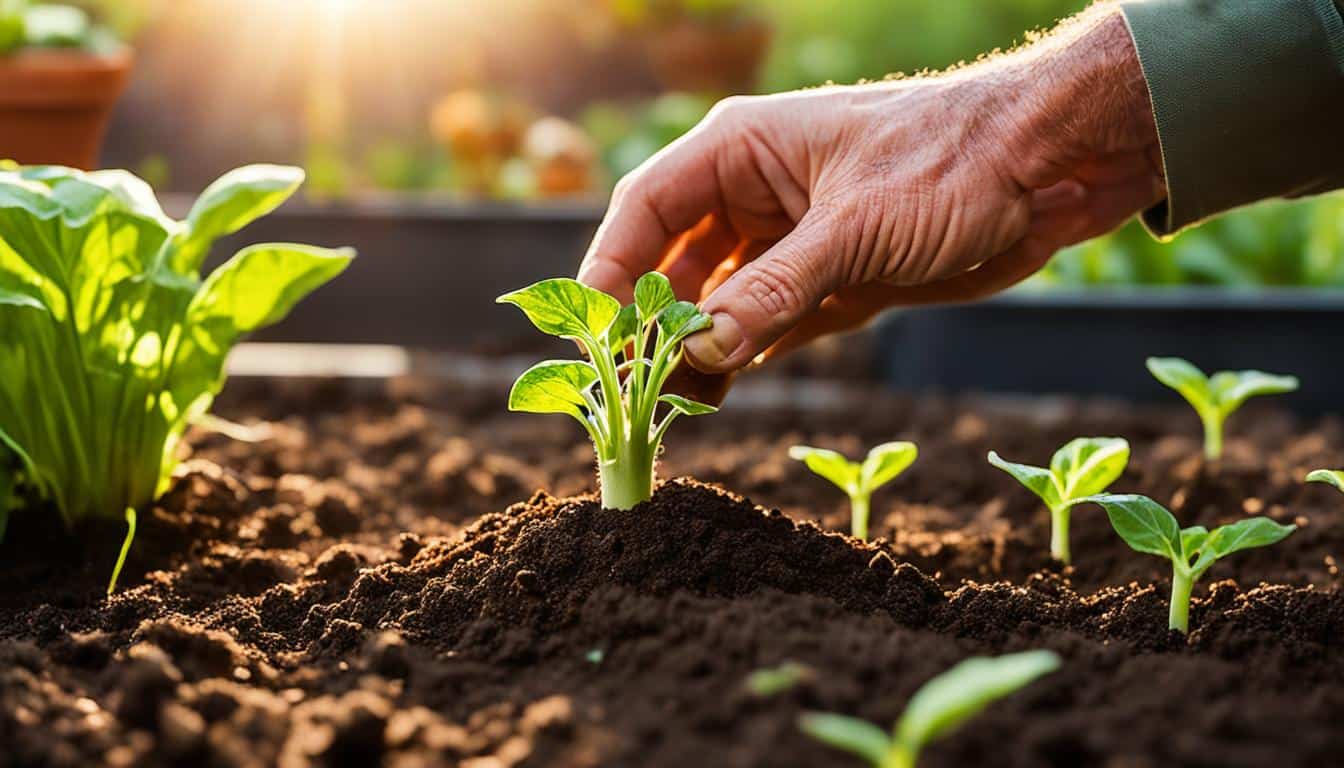
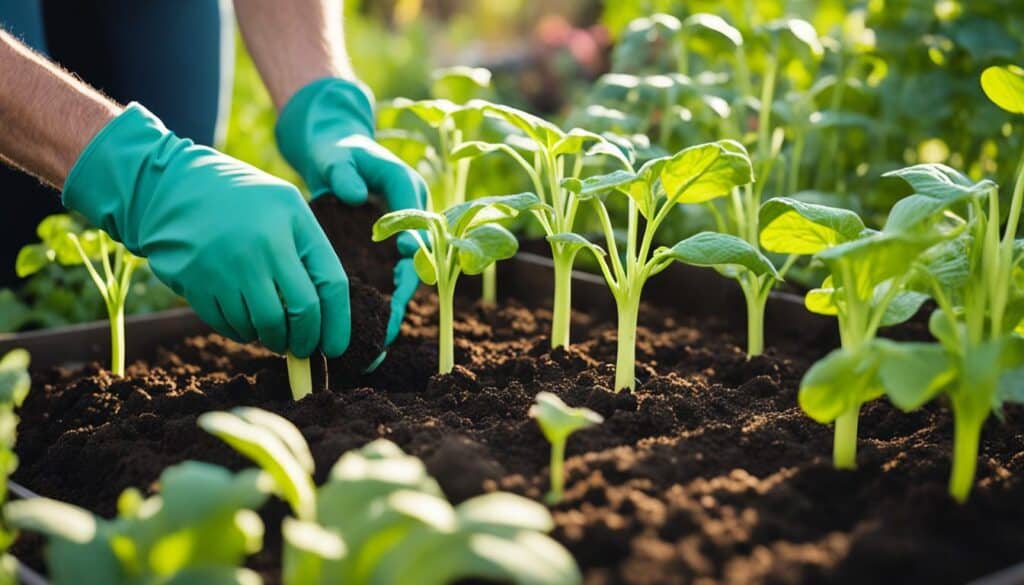
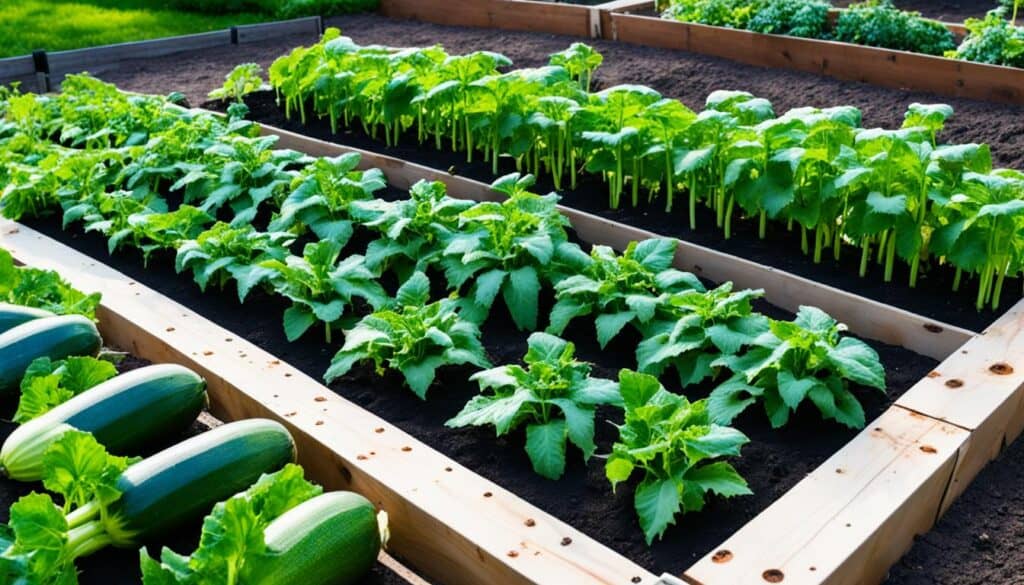
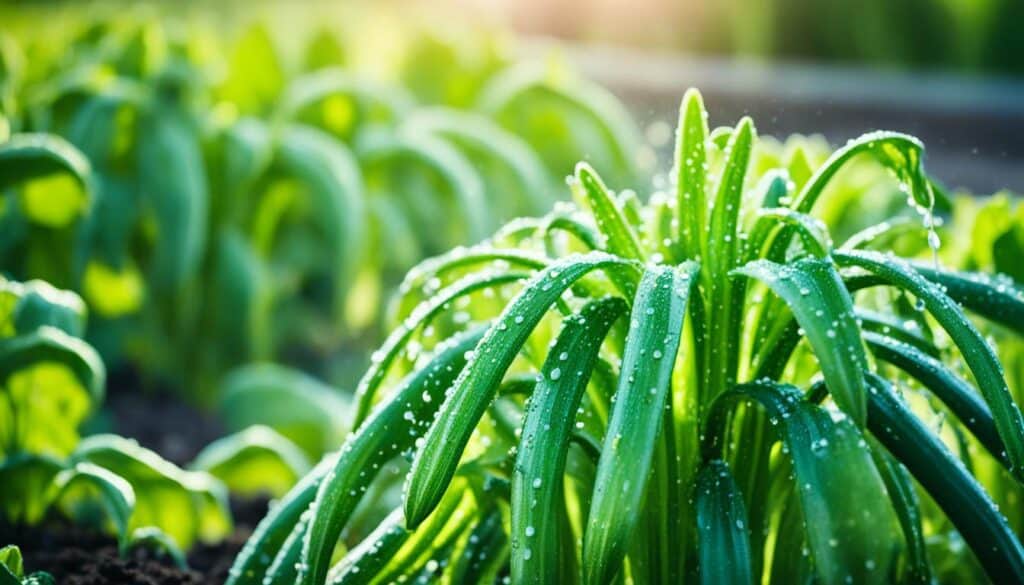
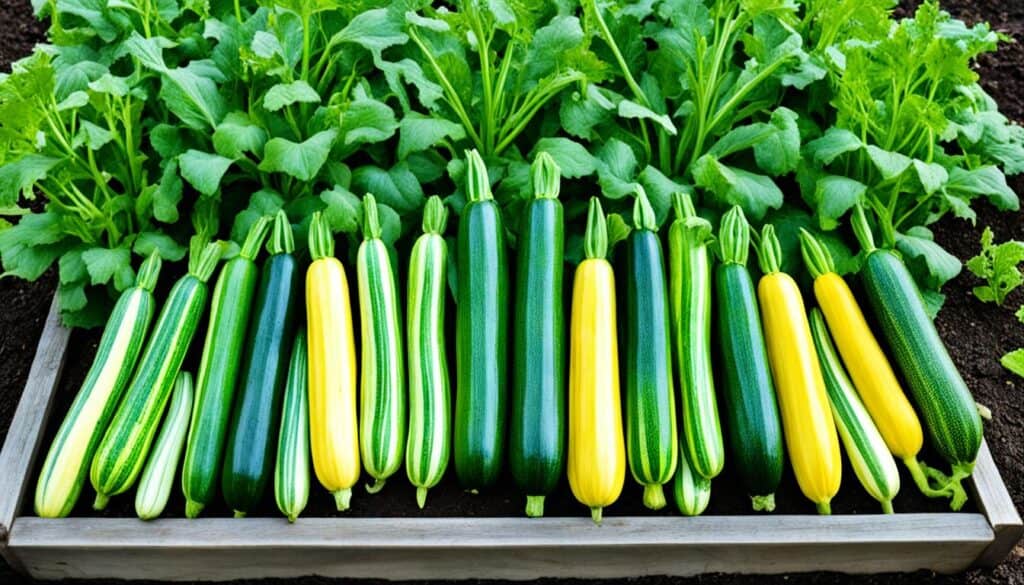




Leave a Reply